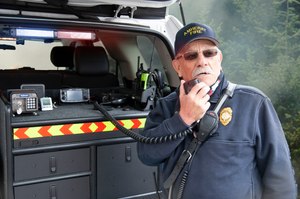
Federal pandemic relief funds are available to help your department upgrade its radio network to enhance interoperability and better serve your community
Sponsored by L3Harris
By Samantha Dorm, FireGrantsHelp Staff
The latest COVID-19 relief legislation was enacted as part of Congress’ FY 2021 budget and signed on March 11, 2021. Dubbed the American Rescue Plan , this package is aimed at providing relief for local and state governments and businesses struggling due to the COVID-19 pandemic, as well as to achieve other priorities of the Biden administration and Congress. The $1.9 trillion legislation is in addition to nearly $4 trillion in relief provided in 2020.
The ARP provides $350 billion to help states, counties, cities and tribal governments cover increased expenditures, replenish lost revenue and mitigate economic harm from the COVID-19 pandemic. Additional funds are included in the bill that may enable the first responder community to invest in enhanced or upgraded communications systems.
The ARP provides for direct aid to both state and local governments, as well as several competitive grant program opportunities to improve local community response and recovery. The $350 billion direct aid is broken down into the following:
In addition to the direct allocations, the ARP provides for other grants to first responders. Guidance is still being created for the release of the following resources:
The Coronavirus State and Local Fiscal Recovery Funds provide substantial flexibility for each jurisdiction to meet local needs. These funds may be used to cover costs incurred to:
NOTE: State and local governments are allowed to transfer funds to certain groups, including special-purpose units of state or local governments, such as fire districts.
Two key restrictions on the use of funds:
FEMA has not yet determined how these grant funds will be accessed, but there are two options:
The big question for both career and volunteer departments continues to be: How do we access the direct ARP funds? The first part of the process is learning how the funds will be distributed in your community. The process for allocating funds varies by community. Departments covering more than one jurisdiction will need to inquire about each one separately. Other important questions: Who will be making the decisions? How and when should proposals be submitted? What should be included in the requests?
Regardless of the process for fund distribution, leaders in the fire/EMS services must be ready to justify their requests with qualitative and quantitative data. Just as you would with a competitive grant, such as the Assistance to Firefighter program, key information – including call data, demographics, an overview of critical infrastructure and your cost estimates – should be presented to the decision-makers.
Be prepared to tell the story of the importance of communications systems to your department and community. The National Incident Management System communications and information management principles are a good starting place for points to help justify your request, such as:
Interoperable communications provide a lifesaving capability that can benefit every community across the United States. By sticking to the NIMS model, your department should be able to easily correlate your pandemic response efforts to enhancements in communication tools. Build on that by providing information specific to how your department was impacted over the past year by COVID-19 response.
Prepare now to secure these vital funds and help your department strategically invest in technologies and services that create a foundation for more effective response to future public health emergencies. To position your agency for success, consider these best practices from the FireGrantsHelp team:
Challenge yourself to look at the needs of your agency and your community from a holistic perspective versus rushing to the table with a request for a new building or items singularly focused on your department. Are there opportunities to combine efforts with other departments or agencies ?
For career departments, a funding request that benefits both police and fire may carry more weight, while volunteer departments may want to consider a regional communications enhancement project. Regional projects would enable partner agencies to pool their resources so that the financial burden is shared across each entities portion of the ARP direct allocation.
Customized grant help for radio/communications projects , including research, alert notices and application reviews, is available from the FireGrantsHelp team of grant experts. Whether you’re just starting your project or need to add the final touches to an application, our staff of grant consultants has teamed up with L3Harris to provide grant resources and services specific to radios.
The L3Harris P25 radio system combines the benefits of an IP-based network with industry-recognized P25 standards for a single, cost-effective, IP-based network with high reliability, proven interoperability and clear and secure communications.
For more information visit L3Harris .
Read Next: The impact of the American Rescue Plan on local government
Copyright © 2025 FireGrantsHelp.com. All rights reserved.
